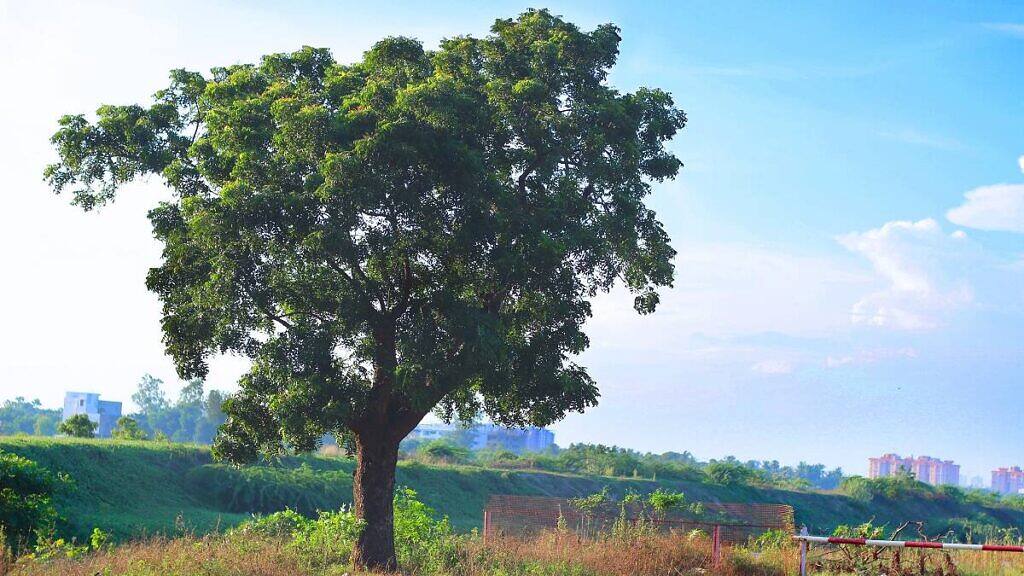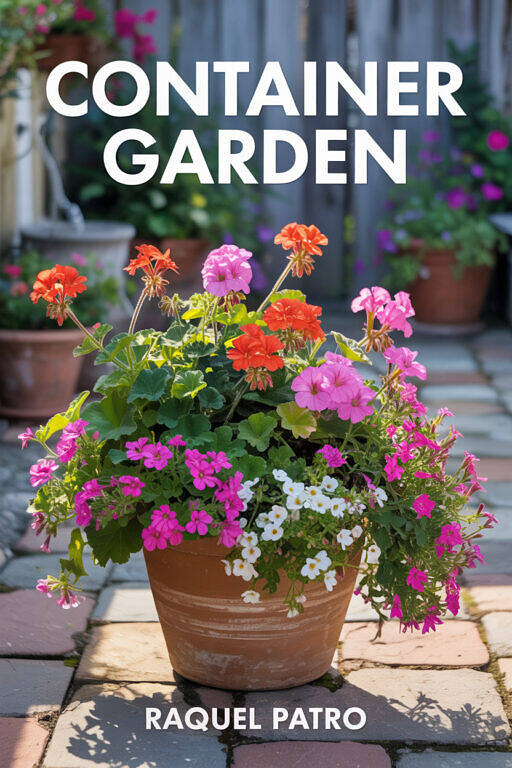Neem (Azadirachta indica) or Margosa is a tree that carries millennia of history and traditional knowledge, but it has only recently gained global scientific recognition. Native to the Indian subcontinent, this perennial species has established itself as one of the most versatile plants in the world, simultaneously integrating into agricultural systems, medicinal practices, and landscaping projects in dozens of countries. Its remarkable ability to survive in adverse conditions – poor soils, water scarcity, and high temperatures – has turned Neem into a strategic ally for regions facing climate challenges. While its leaves and seeds provide bioactive compounds for natural pest control, its dense canopy offers refuge for urban wildlife and thermal relief in urban centers of tropical and subtropical climates.
The scientific name Azadirachta indica was established by Adrien-Henri de Jussieu in 1830, when he separated the species from the original Melia genus proposed by Linnaeus. The genus name derives from Persian “āzād dirakht“, meaning “free or noble tree”, reflecting the perception of the plant’s natural resistance to diseases and pests. The specific epithet “indica” refers to its geographic origin in the Indian subcontinent.
Azadirachta indica is native to India, Pakistan, Bangladesh, and regions of Southeast Asia such as Myanmar, Laos, Cambodia, Thailand, and Vietnam. It occurs naturally in dry to subhumid tropical forests, open savannas, and low-altitude areas with well-drained soils. It prefers environments with annual average temperatures between 21°C and 32°C (70°F and 90°F) and annual rainfall ranging from 400 mm to 1200 mm (15.7 inches to 47.2 inches). The species shows high drought tolerance and adapts to sandy or slightly saline soils. Its robust root system allows access to deep aquifers, favoring its survival in arid environments.
Neem is a large tree, typically ranging from 49 to 66 feet in height, but can reach up to 98 feet under ideal conditions, with a broad canopy that spans 49 to 66 feet in diameter. The root system is robust, consisting of a deep main root and well-developed lateral roots, providing high drought resistance. The trunk is generally straight, with a diameter that can exceed 31.5 inches (80 centimeters) in adult specimens; the bark is hard, deeply fissured, and ranges from dark gray to reddish-brown on the outside and reddish on the inside when exposed to air. The texture of the bark is rough and thick, while the branches are well distributed and form a dense and rounded canopy. Growth is rapid and branching occurs broadly, promoting shading.
Neem leaves are compound, pinnate, alternating along the branches, measuring between 7.9 and 15.7 inches (20 to 40 centimeters) in length, with 8 to 31 ovate or lanceolate leaflets with serrated edges. The leaflets display a shiny dark green color at maturity and may be reddish or purple when young; they have well-marked veins and short petioles. The leaves persist most of the year in tropical regions but may become deciduous under severe water stress. The texture of the leaflets is leather-like to slightly rigid, with a smooth surface and no visible pubescence. The basal asymmetry of the leaflets is a distinctive characteristic of the species.
Azadirachta indica is a monoecious and andromonoecious species, featuring both male and hermaphroditic flowers on the same individual. Flowering occurs predominantly during the dry season or at the beginning of the rainy season, varying according to the local climate. The inflorescences are axillary panicles that are either pendulous or erect, branched to the third degree, measuring up to 9.8 inches (25 centimeters) in length, and bear between 150 to 250 small flowers. The flowers are actinomorphic (radial symmetry), white or white-yellowish, with a perceptible sweet fragrance at a short distance; each flower measures about 0.2 to 0.24 inches (5 to 6 millimeters) in length and up to 0.43 inches (11 millimeters) in width.

Pollination is primarily carried out by insects (entomophily), especially bees attracted by the aroma of the flowers. The fruit is an ellipsoid or oval drupe, smooth, about 0.55 to 1.1 inches (1.4 to 2.8 centimeters) in length and up to 0.59 inches (1.5 centimeters) in width; upon maturation, it acquires a yellow-greenish to yellow color and a sweet fibrous pulp, however, it is not highly regarded for direct human consumption. Each fruit generally contains a single elongated seed enclosed by a hard endocarp; the seeds are mainly dispersed by frugivorous animals that consume the fruits.
Neem has a long history of use in traditional Indian medicine, particularly in the Ayurvedic, Siddha, and Unani systems, where it is considered a ‘mobile pharmacy’ due to the variety of bioactive compounds found in its leaves, flowers, fruits, seeds, and bark. Its medicinal properties include antifungal, antibacterial, anthelmintic, and anti-inflammatory applications, although clinical studies are still limited regarding its efficacy and safety in humans. The oil extracted from the seeds is used in the production of cosmetics, soaps, creams, and natural insect repellents. In some regions of India and Southeast Asia, young Neem leaves and flowers are used in traditional dishes, despite their characteristic bitter taste. Additionally, branches of the tree are traditionally used as natural toothbrushes due to their antiseptic effect.
Azadirachta indica also has significant cultural symbolism: in many Hindu festivals its flowers are used as offerings and symbols of purification. Neem is often planted near temples due to its association with spiritual protection and purification of the environment. For centuries, its dried leaves were used to protect stored grains from household pests. Its wood, known for its durability and natural resistance to insects, is traditionally used in the making of furniture, musical instruments, and agricultural tools. Neem was also a focal point in international debates on biopiracy and patents related to the traditional use of its extracts.

In agriculture, Neem stands out as a raw material for multifunctional organic products that serve both as fertilizer and crop protection agent. The oil extracted from its seeds through cold pressing contains over 150 bioactive compounds, with azadirachtin being the triterpenoid with the highest insecticidal activity. It works by deterring insect feeding and disrupting their development. Neem cake, the byproduct of oil extraction, functions as an organic fertilizer by supplying essential nutrients to plants while also combating soil-borne pests and promoting root development through the release of auxin and gibberellin. However, since it also inhibits the growth of nitrifying microorganisms, Neem cake should always be used in moderation and supplemented with a soluble nitrogen source, such as urea, to prevent deficiency of this vital nutrient for plant growth.
In tropical and subtropical landscaping, Neem is prized for its impressive size, broad and dense canopy that provides generous shade in squares, urban parks or large residential gardens. Its rapid growth makes it efficient as a tree for immediate shading of extensive areas or as a structural element in green corridors and avenues. It is often used to form living barriers along boundaries or rural roads due to its low branching and drought resistance. In rural environments or agroecological sites, it can be integrated into agroforestry systems to protect against strong winds and excessive sunlight on sensitive crops.
Neem can be cultivated in gardens and spacious backyards both for its ornamental and functional value: besides the dense shade that cools the external environment, its discreet flowers attract bees and other pollinators to the garden. The tree also serves as a focal point in minimalist landscaping projects due to the fine texture of the compound leaves and sturdy trunk with fissured bark. It is recommended to combine Neem with drought-adapted species such as Trumpet Trees (Handroanthus spp.), Flamboyants (Delonix regia) or palms to create striking visual contrasts without compromising the sustainability of the garden. Despite its ornamental potential, it is essential to critically evaluate its use in landscaping, as the species can exhibit invasive behavior in certain ecosystems, especially in areas close to native forest fragments.

Neem requires high light intensity for full development, preferring direct sun exposure throughout the day. It adapts better to tropical and subtropical climates, with average annual temperatures between 70°F (21°C) and 90°F (32°C), tolerating extremes up to 115°F (46°C). It does not withstand frost or intense cold, being sensitive to temperatures below 39-41°F (4-5°C), which can cause total defoliation and even death of the plant. Neem has good resistance to drought and moderate winds, but does not thrive in regions subject to strong maritime winds or high atmospheric salinity. In very humid or cold areas, growth is impaired and the incidence of diseases may increase.
It prefers deep, well-drained sandy soils, with a pH between 6.2 and 7.0; heavy clay or poorly drained soils should be avoided due to sensitivity to waterlogging. Neem is tolerant of naturally low soil fertility, but responds positively to the addition of organic matter. After establishment, watering can be spaced out, as the plant is quite drought-resistant; however, young saplings require regular irrigation until they are fully rooted. Excess water or rapidly saturated soils can lead to root rot.
Planting should be done in deep, well-prepared planting beds, enriched with organic compost or cured manure to favor initial rooting. It is recommended to stake young saplings to prevent them from falling over due to wind until they are firmly established. Fertilization can be done annually with balanced NPK or phosphorus-rich formulations at planting; subsequently, annual applications of organic matter are sufficient to maintain the vigor of the adult plant. Pruning is advised only for removing dry or poorly formed branches and to control size in urban environments. The application of mulch around the base helps retain moisture and control invasive plants.
Azadirachta indica exhibits high natural resistance to most pests and diseases due to the presence of bioactive substances in its leaves and seeds; it rarely suffers severe attacks by common insects or fungi in gardens. However, it may occasionally be affected by scale insects or borers in very humid or shaded environments. Preventive practices include maintaining good ventilation around the canopy and avoiding excess soil moisture.
Neem propagation is primarily done by fresh seeds taken from ripe fruits; these should be sown immediately after harvesting due to rapid loss of viability. The seeds should be cleaned of pulp and lightly buried in moist substrate; the germination rate is high (over 75%) and occurs within one to three weeks under ideal conditions. Propagation by semi-hardwood cuttings or air layering is also possible, though less common in commercial practice. The best period for sowing is at the beginning of the local rainy season. The plants usually begin flowering between four to five years after planting under favorable conditions.




